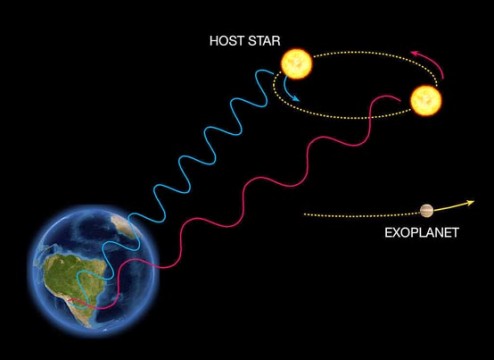The discovery of planets around other stars is based on wobbles in the stars' motions. Don't you have to measure from a stationary point in space to accurately determine this/ Isn't there an added wobble because Earth rotates on its axis and travels around the Sun?

ESO
Yes, Earth's rotation and revolution cause huge variations in the radial (line-of-sight) velocities of stars relative to any given telescope -- roughly 1,000 times greater than those caused by a typical exoplanet's tug on its host star. Fortunately, Earth's motion is known with extreme accuracy, so astronomers can (and do) subtract it out of the measurements to detect wobbles as small as a few meters per second in distant stars.
— Tony Flanders
 0
0







Comments
You must be logged in to post a comment.